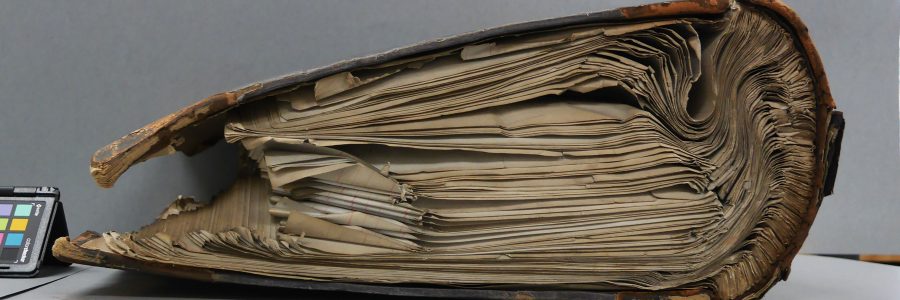
Conservation of three volumes in the Cambridge University Press Archive
Imagine having to file your financial year-end invoices in one of these mammoth volumes!
The Cambridge University Press Archive contains three oversize ‘stationery’ bindings that hold Press invoices dating from 1914 to 1922. They are extremely large, all three volumes are half-bound in leather (on the spine and the corners), and by late 2020, their condition had reached the stage where they could not be consulted or handled without conservation assessment and treatment.
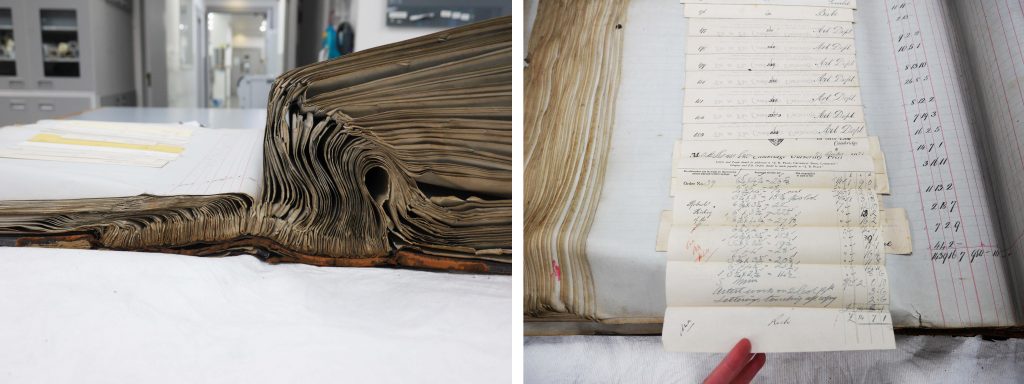
Upon assessment by the Press Conservator, Sally Kilby, three main condition concerns were identified. First, the half-leather binding was suffering from acid deterioration (also known as red rot). Red rot is thought to be caused by the absorption of pollutants in the atmosphere throughout the lifetime of the leather, or from additives included during the manufacturing process.
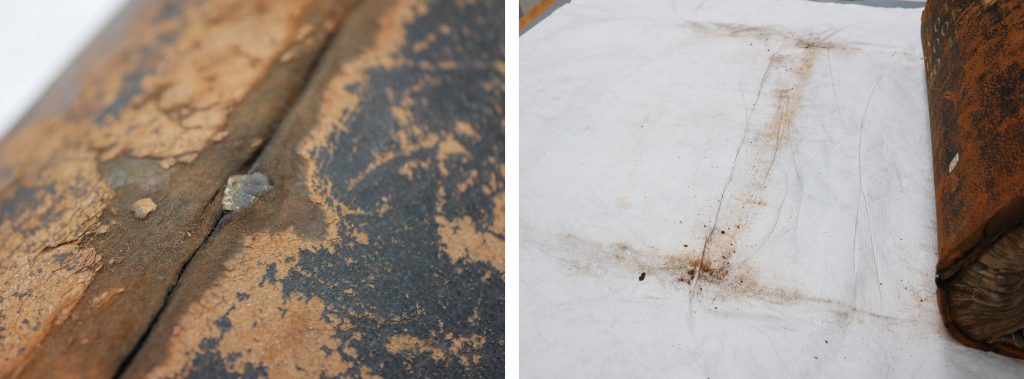
Secondly, it is common for bindings that are designed to have additional bulk added (via the pasted invoices) to have strips of paper known as ‘compensation guards’ sewn into the spine: this allows for the expansion of the text block without causing the opening edge of the book to be thicker than the spine. However, for two of these volumes, the vacant space between the short, stubby guards and the thick layer of pasted invoices had allowed the pages to ‘pleat’ and distort.
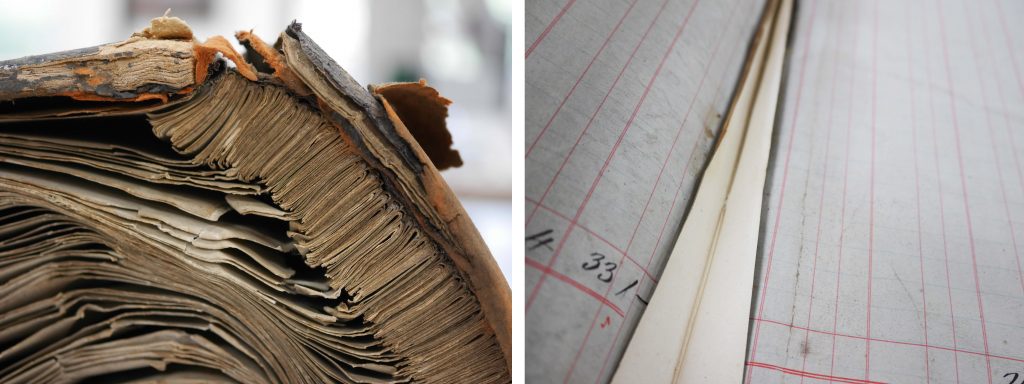
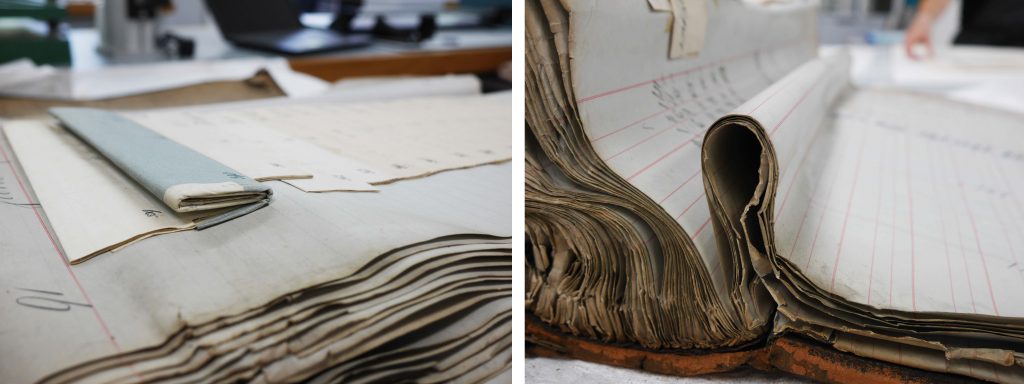
Finally, there were also a considerable number of tears along the exposed edges of the text block paper.
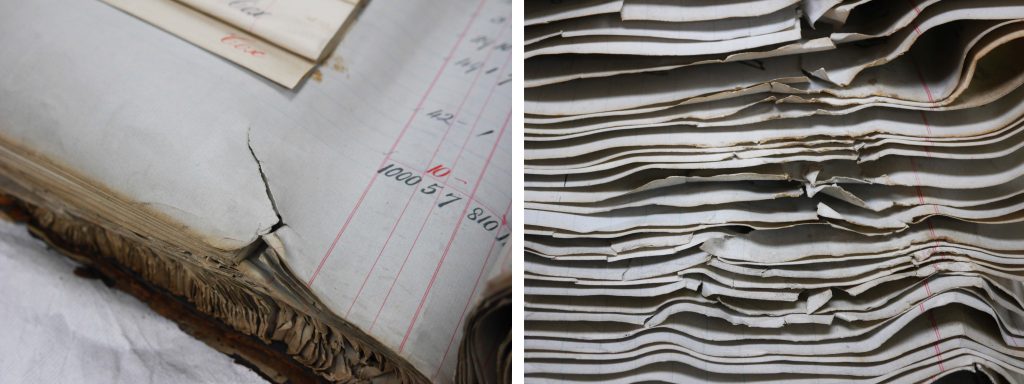
These three condition categories informed the order of conservation requirements. First, the red-rot affected leather was consolidated with a conservation-grade consolidant (x2 applications of 1% Klucel G in isopropanol).
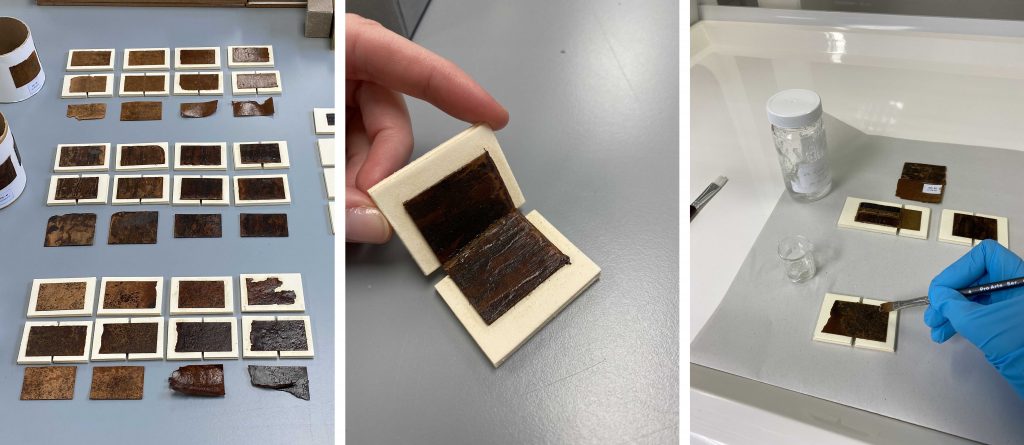
After this, the volumes were cleaned, page-by-page.
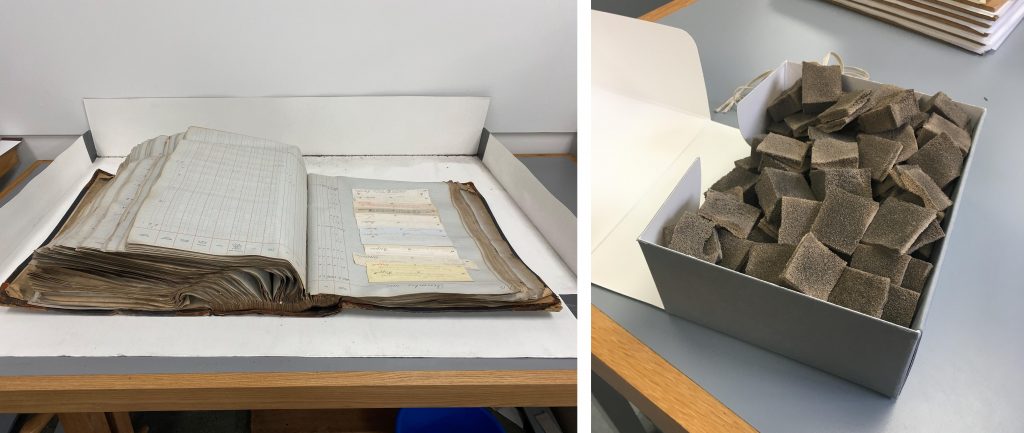
Then, the warped boards (covers) were flattened. The leather on the corners and spine was carefully removed and stored, and a humidification method was designed that would allow the slow introduction of moisture (via water vapour) to the boards. As this moisture very slowly relaxed the fibres in the boards, they became more pliable and after a few hours of gentle humidification they were placed between stiff, heavy wooden boards and clamped in place. The book boards were left in these clamps for seven days, then placed under heavy weights and slowly released over a period of two weeks, allowing them to adjust to their new, flatter positions.
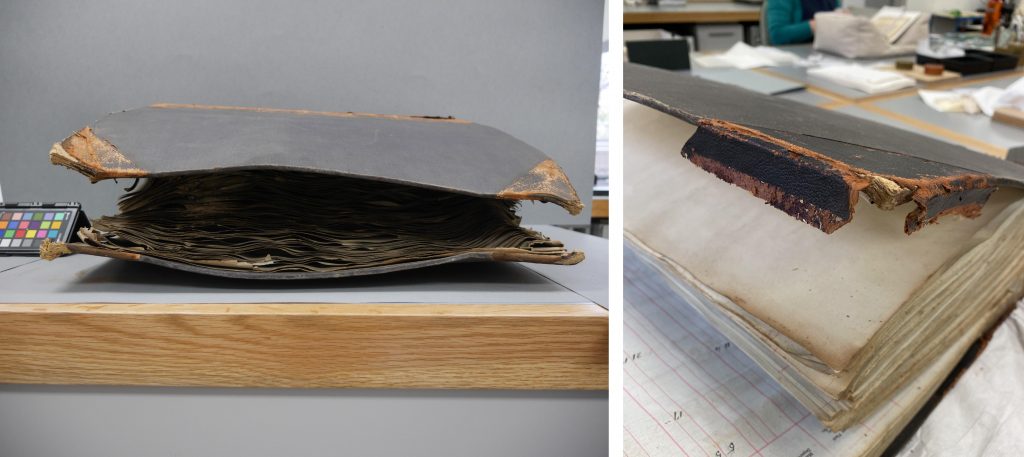
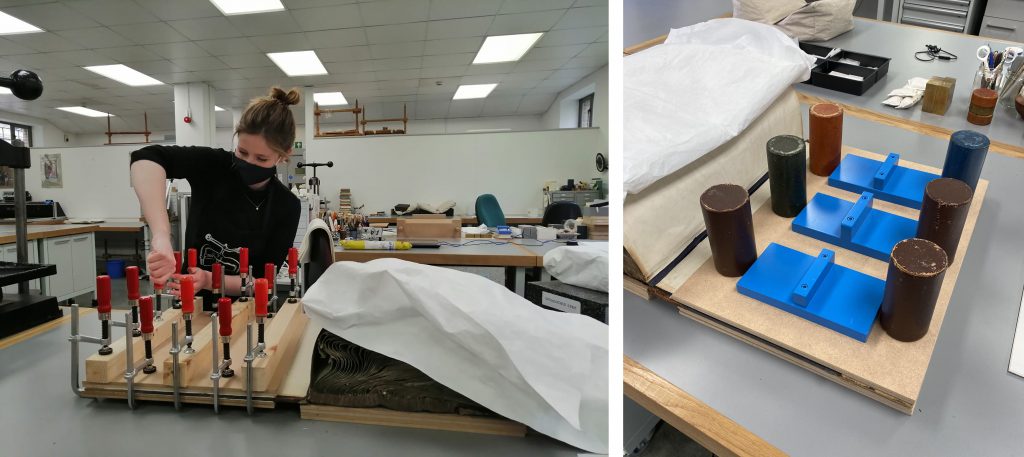
The pleats in the text block were addressed by filling the gaps between the compensation guards and the bulky invoices with conservation-grade paper and board. This has encouraged the text blocks to return to their proper shape, and the material used to fill the gaps (known as interleaving) will remain for as long as necessary (likely a year, or longer) to allow each book’s pages to retain the memory of their new shape.
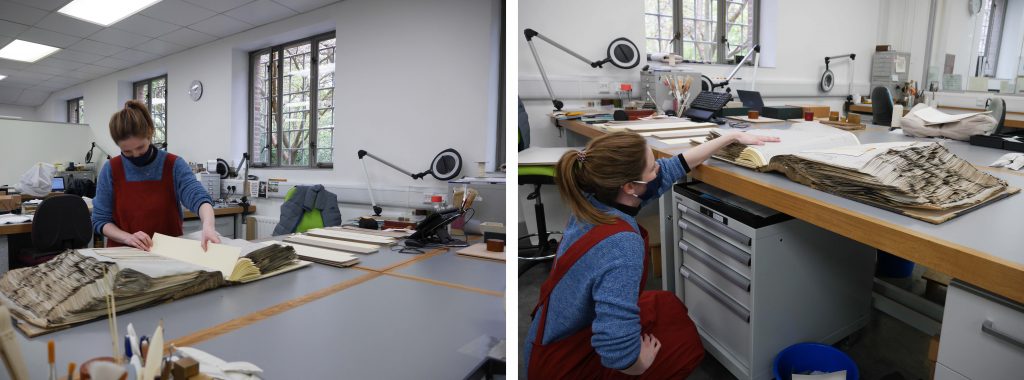
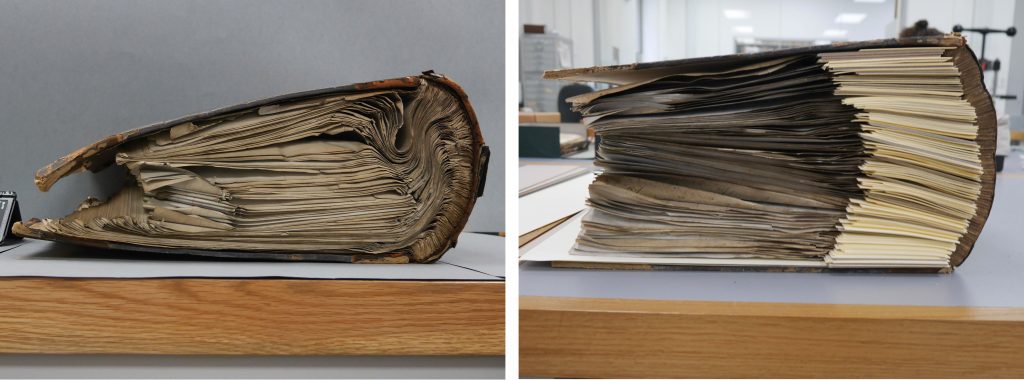
Paper repairs were then undertaken using an acrylic-toned Japanese repair paper. They were adhered using a reversible adhesive (wheat starch paste), which will allow them to be removed in the future if necessary.
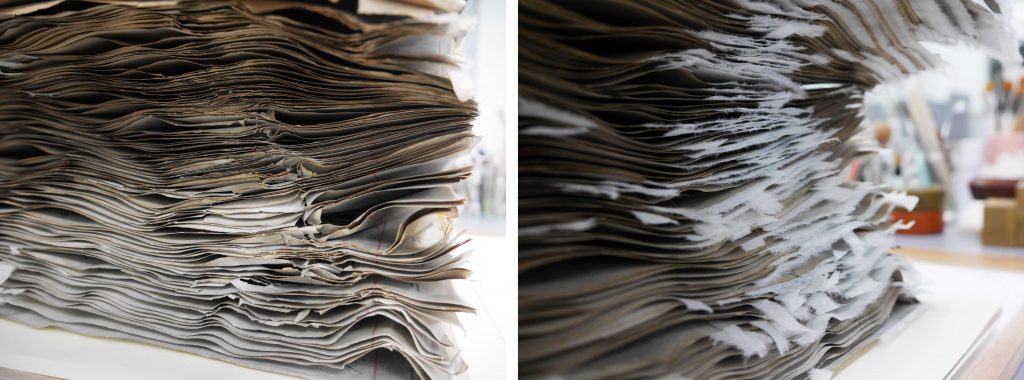
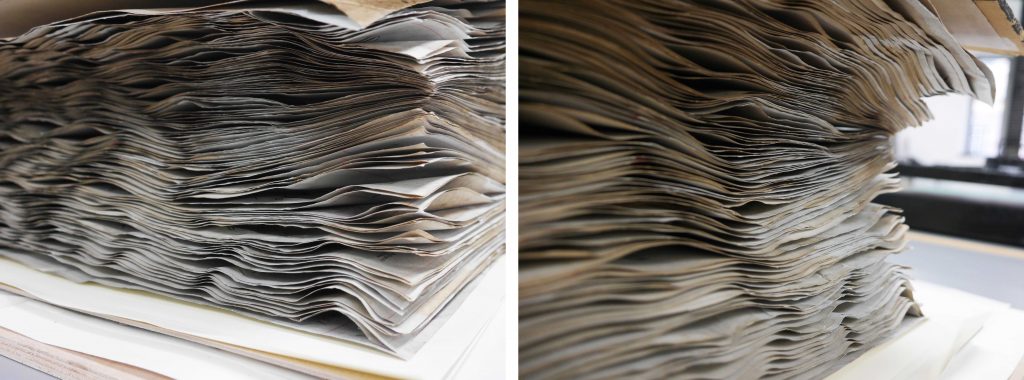
Next steps will involve strengthening the attachment of the boards to the spine and replacing the previously removed leather with a new spine and corners. The original leather with either be placed over the top of the new material (to preserve as much of the original design as possible) or retained and stored with the volumes for future researchers to consult.

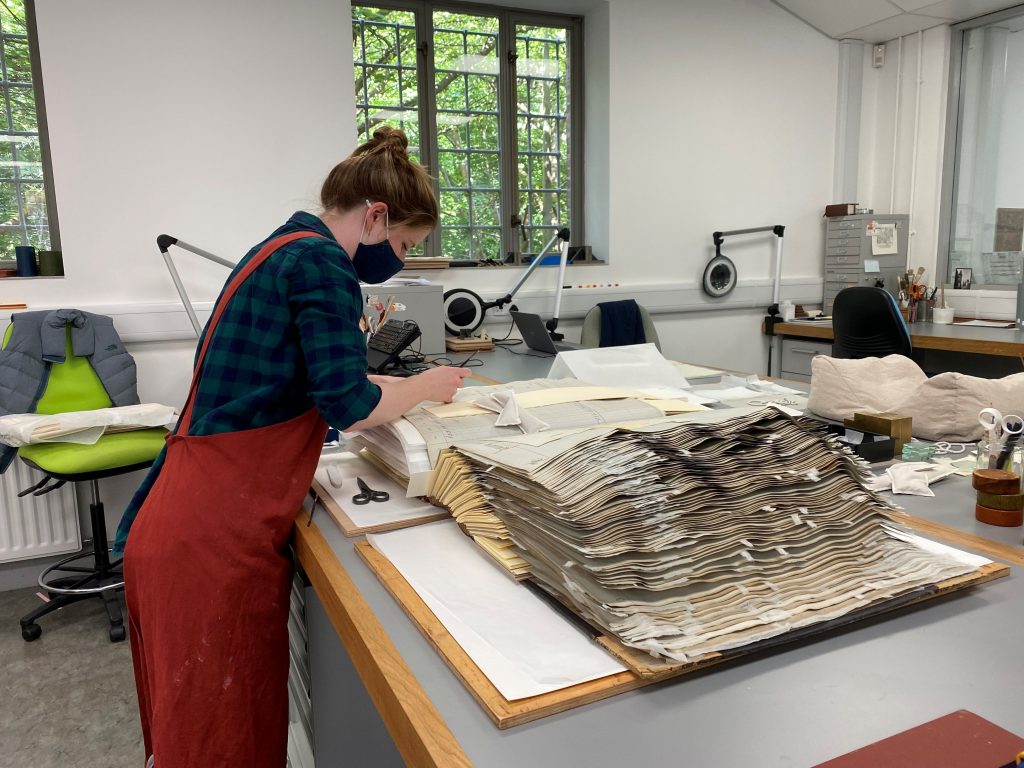
Interesting to see such wonderful care being taken of an historical book. Can’t wait to see the final result.